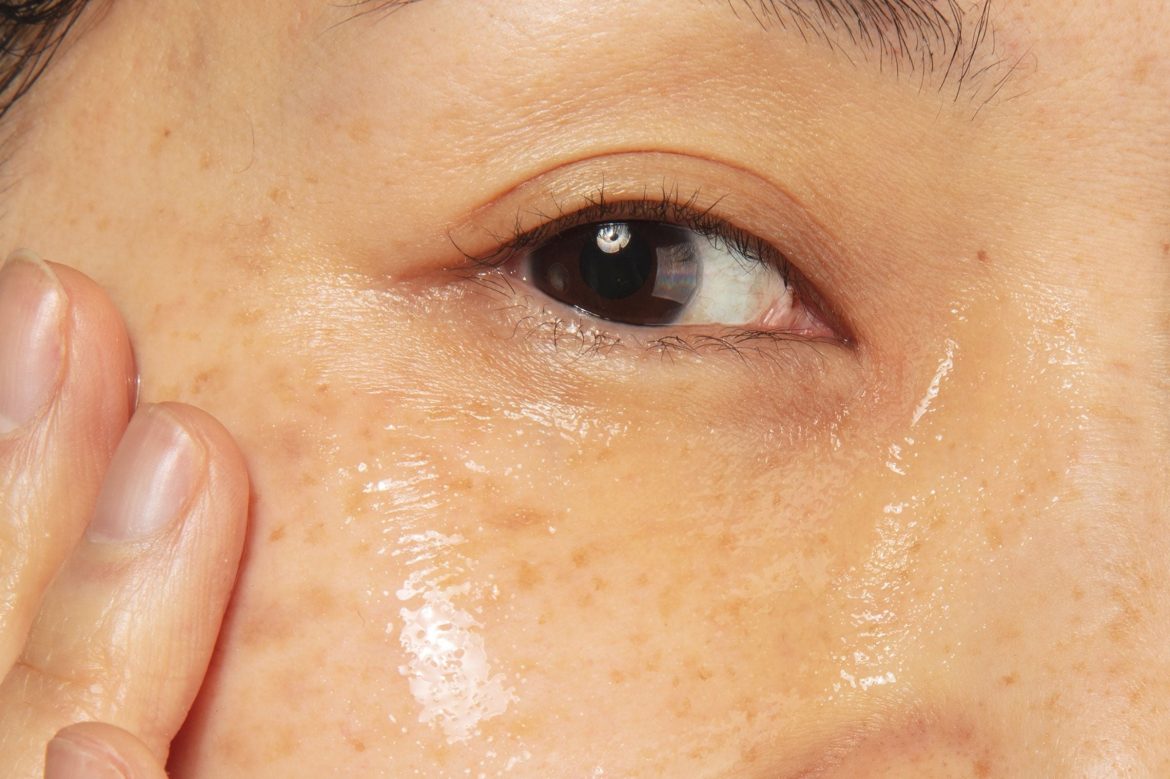The skincare game has changed – have our routines changed with it? Let’s discuss
Posted on February 28, 2024 Written by: 100% PURE®
Looking back at the skincare journey of the past few years, our beauty essentials have gone through a major glow-up, and hyaluronic acid has become a permanent VIP in our beauty routines. Only a select few trending ingredients have earned a long-lasting spot in our daily rituals – remember the argan oil hype in the early 2010s? Yeah, not everyone made the cut. But some changes have stood the test of time, reshaping our entire approach to skincare.
The rise of hyaluronic acid has revolutionized skincare globally, yet many are still hitting up Google with questions like, “What is hyaluronic acid?” and “How to use hyaluronic acid for the skin?” With the beauty world buzzing about techniques like slugging, it feels like a refresher on this skincare classic is overdue. As we all continually fine-tune our skincare game, there are still plenty who could use a guide on unleashing the transformative power of hyaluronic acid for radiant skin.
The name hyaluronic acid is a bit misleading as to how to use hyaluronic acid. Hyaluronic acid sounds like a chemical exfoliant promising to deliver brighter, toned skin; when in reality, it is really more of a humectant than anything else.
For those who have never heard of this ingredient or haven’t gotten a chance to try it, hyaluronic acid is a naturally occurring substance in the human body. It plays a crucial role in maintaining skin hydration and joint lubrication. Often referred to as a “moisture magnet,” hyaluronic acid has the remarkable ability to hold up to 1000 times its weight in water, making it an exceptional hydrating agent. In skincare, it is synthetically produced and used for its unparalleled moisturizing properties.
Acting as a humectant, hyaluronic acid draws and retains water on the skin’s surface, providing a plump and youthful appearance. Beyond skincare, it is also employed in medical procedures such as dermal fillers to enhance facial volume. Embraced for its versatility, hyaluronic acid continues to be a cornerstone in promoting skin health and vitality.
We’ve discussed the versatile uses of hyaluronic acid as a humectant in various moisturizers and serums. Many may unknowingly incorporate it into their routine, highlighting the importance of understanding product formulas. For optimal use, let’s delve into how to maximize hyaluronic acid benefits.
This powerhouse ingredient thrives in subsequent skincare steps like toner, serum, or moisturizer, rather than cleansers, which mainly reset the skin’s surface. Hyaluronic acid’s prowess lies in enhancing hydration, refining skin texture, and ensuring prolonged moisture. Unlike light-sensitive retinoids or clarifying AHAs, hyaluronic acid suits all skin types, offering daily application advantages for both morning and night routines.
Hyaluronic acid seems like a perfect fit for everyone. It not only delivers key skincare benefits that most of us seek but also simplifies our skincare routine effortlessly. Some of the most universally valuable benefits that hyaluronic acid offers include:
Deep skin hydration resulting in glowing, plump skin
Acting as a humectant to preserve hydration
Improving skin texture by supporting collagen and elastin in the skin
Improves skin tone to boost clarity by aiding in skin cell repair
Soothe skin inflammation to decrease redness and reactivitySUBMIT
Newsletter Subscribe
for more blog updates and exclusive discounts
Hyaluronic acid offers benefits even for skin types that might not typically seek out moisturizing ingredients. Let’s break down how to use hyaluronic acid based on skin type and the advantages it brings to each of us:
• Mature | Deeply hydrates and reduces the appearance of texture.
• Dry | Provides deeper, longer-lasting hydration.
• Sensitive | Gently improves skin texture and tone.
• Normal | Aids in supple, glowy, hydrated skin.
• Acneic | Impacts hydration and softness, improving texture and aiding in complexion repair.
• Combination | Provides and preserves moisture where needed, improving skin balance.
• Oily | Lightweight and hydrating, beneficial for maintaining smooth, clear skin.
Now that we’re all on the same page about hyaluronic acid and its functions, how do we seamlessly integrate it into our skincare routine?
Understanding the science of product pairing is key to achieving our skincare goals (or preventing issues). It’s crucial to have a good grasp of what our ingredients do, enabling us to pair them effectively and maximize their benefits. Given that hyaluronic acid is water-based, it harmonizes well with other water-based ingredients and those yielding similar outcomes like brightening, calming, or smoothing. Let’s kick off by outlining our skincare objectives and then delve into the combinations that lay the foundation for splendid skincare routines.
If our goal is overall glow…
Use hyaluronic acid + AHAs. This looks like incorporating an enzymatic exfoliant like lactic acid or citric acid. The enzymes in the AHA boost skin cell turnover and brightness. This combo will improve the evenness of complexion and skin texture. Try a pairing like the 100% PURE Vitamin C Mask which contains brightening lactic acid, followed by the calming Rose Hyaluronic Acid Serum.
If our goal is anti-aging or complexion repair…
Use hyaluronic acid + a retinoid. This combo together is a skin texture savior working to polish away fine lines and create smoothness on a cell level. Retinol magnifies skin cell turnover to maintain the most youthful-looking skin. How to use hyaluronic acid, in this case, is to preserve the moisture in the skin to maintain that smoothness and suppleness while keeping our moisture barrier intact. This is also a powerful duo for diminishing acne or breakouts. Layering a hyaluronic acid serum under our Retinol Restorative Overnight Balm before bed can create dream-like skin that we get to keep when we’re awake. Be sure to follow up with consistent SPF use.
If our goal is to improve skin hydration and reduce acne…
Use hyaluronic acid + niacinamide. A great combo for this is our Niacinamide Boost, which functions as a serum, followed by a moisturizer that contains hyaluronic acid. The reason this combo is so iconic is that niacinamide is working to rebuild the skin which diminishes environmental damage. Using this with a deeply hydrating and barrier-protecting ingredient like hyaluronic acid means we can better maintain skin health and beauty.
Looking for more products that contain hyaluronic acid? Try these:
Retinol PM Eye Cream
Green Tea Water Bomb Mask
Rose Water Hydrating Milk
Matcha Oat Milk Nourishing Mask
Ginseng Collagen Boost Mask
Wrinkle Smooth Sheet Mask
How Can Hyaluronic Acid Benefit Different Skin Types?
Hyaluronic Acid benefits all skin types by hydrating and retaining moisture. For dry skin, it alleviates dryness, while for oily skin, it provides hydration without clogging pores. It plumps and smoothes wrinkles in aging skin and enhances the overall complexion for various skin types.
How Should Hyaluronic Acid Be Incorporated into a Daily Skincare Routine?
Apply hyaluronic acid after cleansing and before heavier products. Use it both morning and night for optimal hydration. Follow up with a moisturizer to seal the hydration and protect the skin barrier.
Can Hyaluronic Acid Be Paired with Other Skincare Ingredients for Enhanced Benefits?
Yes, hyaluronic acid pairs well with various ingredients. Vitamin C boosts collagen synthesis, while peptides and retinol complement its anti-aging effects. Combine it with niacinamide enhances hydration and soothes irritated skin.
Are There Any Side Effects or Precautions When Using Hyaluronic Acid?
Hyaluronic Acid is generally safe but patch test to rule out allergies. Overuse may cause skin sensitivity. If applying a concentrated form, follow with a moisturizer to prevent dryness or irritation.
How Do Seasonal Changes Impact the Efficacy of Hyaluronic Acid in Skincare?
Seasonal variations can affect hyaluronic acid efficacy. In dry, cold climates, it may require additional moisturizing layers, while in humid conditions, it can be used alone for sufficient hydration. Adjust the routine based on climate and individual skin needs.

